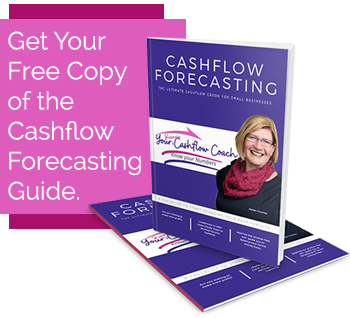Don’t just glaze over and hand your numbers to your accountant – it is your business not theirs!
June is a good time to spend looking at the numbers in your business. It is the time to analysis and plan your budget and cash flow for the coming year. Take the time now to understand the relationship between your balance sheet and your profit and loss. Understand what those % mean and what changing just 1% will do to your bottom line (the money in your pocket).
In simple terms, Profit and Loss is your trading income, Sales, and Expenditure it is about your Profitability. In comparison, your Balance sheet is the value of your Assets, and hopefully a growing one at that.
Bank Balance is often the number one focus of most small business owners, and of course looking at your sales figures every day. However, there is a lot more to profitability than just sales. Looking at your expenses and the % of your different areas that affect your profitability is important.
I find that most small businesses I encounter don’t take the time to look at their balance sheet or understand how to grow that balance sheet to make real value in their business.
Profit measures what has happened in the past (its revenue minus its expenses) – The Profit and Loss Statement.
The Value is a measure of the businesses current Assets and Liabilities – The Balance Sheet Statement.
Building the value of your business also includes building your brand, your reputation, and your systems. This boils down to being consistent in your business reputation and image. Being reliable and memorable and you can’t develop these things without systems and processes.
“You can be making a profit and have no money in your bank account and you can have money in your bank account and not be making a profit!”
Use these steps as a guide in building and understanding your Businesses Value and your Business Profit
Build your Image Brand and Reputation
With a strong online presence and an effective SEO strategy your business will grow in leaps and bounds. Think beyond your own website’s content and strengthen your online presence everywhere through public relations and SEO. Get blogs and news sites to write about you. Create and optimise all of your social media profiles – if you have the time to learn how to do this process yourself – pay someone if not. Optimise for Google Images, videos and the vertical search engines used in your industry. Create positive PR for greater media coverage, every bit of positive media helps to build your image brand and reputation. Don’t forget to build your offline reputation and brand too.
Build its Profitability
Increasing your profitability can mean increasing sales, but it can also means keeping a close eye on your expenses. You may have to increase spending slightly to improve your marketing systems, add or modify products and services, focus on new client acquisition, or revive previous clients, which in turn produces a boost in sales. During this process, watch your net and gross margins too. You should track and be able to explain any fluctuations. Understanding your Profit & Loss and what your Balance sheet is telling you is a must .
Build your resale ability (systems)
The one way to do this is simple – increase the speed you deliver the kind of value people are willing to pay for. When it comes to life, most people seem to be impatient nowadays. A person who didn’t realize that they wanted your product or service until today, now wants it yesterday. People perceive a direct correlation between speed and the value of your offering. A person or business who can deliver that for you fast is considered to be a better and more competent person offering a higher level of quality than a person who does it slowly, or whenever they get around to it.
Build your assets
Hard assets are often easier to categorize because you can touch and see them. However, intangible assets occasionally get overlooked by business owners in the valuation process. Keep a comprehensive running list of tangible and intangible assets to ensure you are “Building your Assets” within your business.
If you haven’t already, start documenting your assets and keep a running list. Intangible assets might include such things as client databases, referral source relationships, vendor and supplier contracts, customer agreements, trademarks, URLs, just to name a few.



